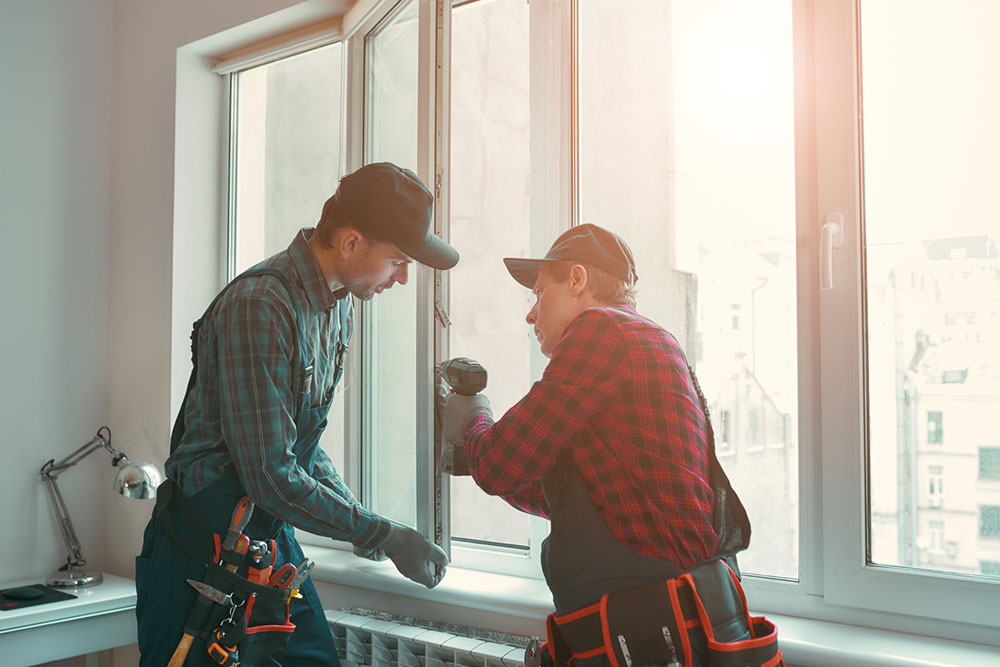8 common window installation mistakes to avoid

Windows are an essential aesthetic and security feature of one’s home. A new window can completely transform the appearance of a room and improve the home’s energy efficiency. However, homeowners must know how to do this right. Mistakes here could lead to energy loss, water damage, an unattractive finish, or even expensive repairs. Read on to find out about seven of the most common window installation mistakes people make and how to avoid them.
Making the wrong rough-size opening
Window installation is one of the last steps in a house’s construction or renovation process. For easily putting up windows, it is crucial to leave the right amount of space for the frame. The frame should be slightly larger than the windows, but not more than the manufacturer’s recommended Rough Opening. Getting the right fit for one’s windows can help ensure a smooth installation and effortless movement.
Not following the manufacturer’s instructions
Even though the window installation process looks quite similar across brands, there are some subtle nuances that one must pay attention to. These can be found in the manufacturer’s instructions. Ignoring these could lead to poor installation or even void the window’s warranty. Before taking on a window installation project, it is always a good idea to read through the provided material carefully and familiarize oneself with the process.
Getting the wrong-sized jambs
The jambs support the window frame in the rough opening. Getting the size wrong for these vital parts can lead to poor-fitting windows. Speak to a professional for guidance and advice on how to get this right, or hire a contractor to take care of the installation process.
Buying a poor-quality weather-resistant barrier
Weather-resistant barriers create a tight seal around the frame, preventing air and moisture seepage. Their quality can be crucial in determining the right seal for windows and the comfort of one’s home. To avoid problems in the future, invest in a good quality weather-resistant barrier and ensure that it is installed correctly. Some things to keep in mind here include:
Keep the window sill clean. Remove any dust, dirt, or debris from the area.
Avoid installing the barrier in extremely cold weather conditions, as some tapes and membranes don’t adhere well during this time.
Read the manufacturer’s guidelines carefully before installation.
Forgetting to check window placement
Before securing the windows, double-check their placement. This can help homeowners avoid ending up with out-of-place or misaligned windows. It may also give rise to issues such as uneven gaps, inadequate insulation, and structural problems that make it difficult to operate the windows. Avoid this by measuring and marking the rough gap well. Use a leveler to ensure the windows are centered well in this space. Check this a couple of times from various angles before securing the windows in place.
Using the wrong spray foam
Small gaps left behind after installation can easily be filled in with spray foam. However, there are two things to keep in mind here:
Using the right foam
Foam comes in various expanding and non-expanding varieties. For window installation projects, only non-expanding foam must be used. The other kind can break or warp the windows.
Using foam correctly
Foam must only be used to correct small holes. Applying it to cover larger gaps may not be the best solution, as it can collect water, increasing the risk of water damage and mold growth. Avoid using foam on or around wooden surfaces, as it can leave unsightly stains on the material.
Overlooking the importance of a backslope
Backslopes help redirect any water buildup in the windows to avoid moisture collection or damage. Often, people forget to incorporate a backslope into their windows, which can lead to mold growth and structural damage. There are a couple of ways to take care of this problem.
Cut the cripple studs at such an angle that they slope away from the window frame.
Consider adding a sill wedge or a sloped pan (this must be factored into the overall dimensions of the rough frame).
Leaving gaps around replacement windows
Installing a replacement window is often more challenging as there are many things to take care of, such as cleaning and smoothing the area, checking for damage, and applying a fresh coat of paint. Failing to take the right measurements during this process can leave one with massive gaps around the window, which aren’t easy to repair. These gaps may also increase the risk of water damage. To avoid this, schedule a visit by a professional to inspect the area and offer advice.